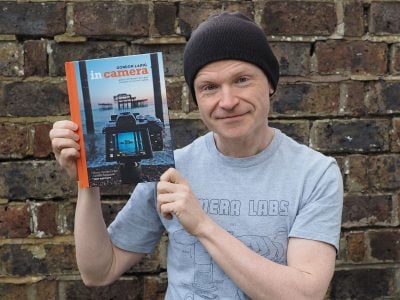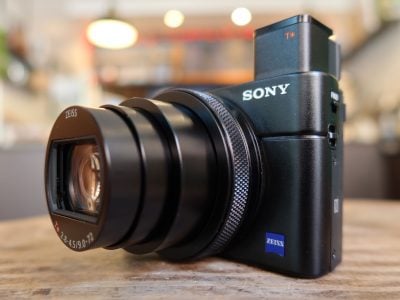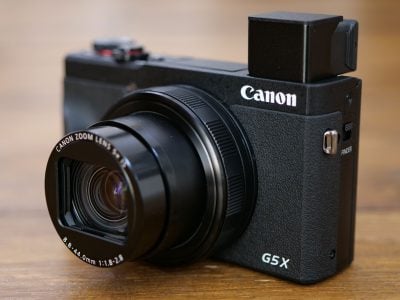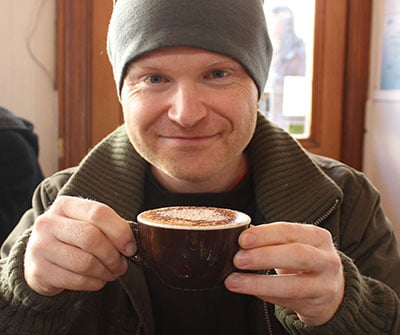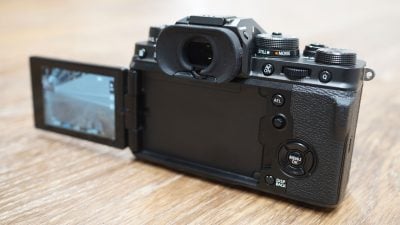Fujifilm XT4 review
-
-
Written by Gordon Laing
Verdict
Verdict so far
The Fujifilm X-T4 builds-upon one of my favourite all-round cameras, inheriting the style and quality of the X-T3, while addressing my key complaints. Fujifilm’s managed to squeeze built-in stabilisation, a more powerful battery and a fully-articulated screen into the X-T4 while only making the body a little thicker, and also thrown-in faster burst shooting at 15fps, better slow motion video at 1080 240p, and a nice new Film Simulation for the moody videographers out there. Crucially these upgrades have been added without losing the compact charm of the earlier X-T models.
With long-awaited built-in stabilisation, it would be easy to assume the X-T4 is simply a merger of the X-T and X-H ranges, but Fujifilm’s keen to point out the X-T4 is very much the evolution of the X-T series and that the X-H will continue, presumably with larger higher-end models that may debut the latest sensors in the future.

The X-T4 gets so much right, it seems churlish to complain about what doesn’t quite work – and it’s pretty minor stuff. For example it’s a little annoying to lose a dedicated headphone jack, but you can adapt the USB port and a cable is provided. The viewfinder resolution hasn’t been improved, but 3.69 million dots is still a decent spec. High Speed 1080 video loses detail at 200 and 240p, but few rivals offer more than half that rate. As the X-H1 learned, it’s also hard to justify a top-end body when it uses the same sensor as a bunch of more affordable models in the series. Indeed I suspect the X-T4 may be the last new body to deploy the X-Trans IV sensor, but equally the sensor is only a year and a half old and still delivers great results – plus the X-T4 is the only model that couples it with IBIS, a bigger battery and flip screen.
Probably the biggest complaints will be addressed to the side-hinged screen by Fuji-fans who prefer the older mechanism, but this is purely personal and as far as I’m concerned, I like the new approach much better. You may also wonder why the X-T4 doesn’t have a pixel-shift mode that uses IBIS to boost the resolution or reduce colour artefacts especially as the GFX100 was confirmed to receive this in a firmware update, but this is most likely due to the 6×6 filter array of the X-Trans sensor being more complex to demosaic than the 2×2 bayer pattern in the GFX and other cameras.
Considering the broader market, the prices of high-end cropped-sensor cameras do overlap with budget to mid-range full-framers and if you’re not wedded to the X-mount, you should weigh-up your options carefully. Canon’s EOS R is now in the same ballpark as the X-T4 and the Canon EOS RP costs less even with a lens. Neither has IBIS, twin card slots nor 4k at 60p, but they remain compelling options. Nikon’s Z6 and Sony’s A7 III are both priced a little higher but still within reach, the latter offering IBIS and twin card slots, albeit not with 4k 60p nor a fully-articulated screen.
If you’re happy with the cropped sensor, you should also consider the other high-end flagship models, including the Sony A6600, Olympus EM1 III, Panasonic G9, and of course Fujifilm’s own X-T3, all available cheaper albeit lacking the complete feature-set of the X-T4. Check out my reviews of all these cameras to find out which best suits your needs.
A lot also boils down to how you feel about the style of a camera, both in terms of external design as well as the images it produces, not to mention the system as a whole. Personally speaking I remain fond of Fujifilm’s approach and wouldn’t trade a bigger sensor for the overall feature-set of the X-T4 at this price point. Ultimately I think Fujifilm’s done a great job at enhancing a popular model without compromising its charm, and the X-T4 becomes arguably the best cropped sensor camera to date.
Check prices on the Fujifilm X-T4 at Amazon, B&H, Adorama, or Wex. Alternatively get yourself a copy of my In Camera book or treat me to a coffee! Thanks!